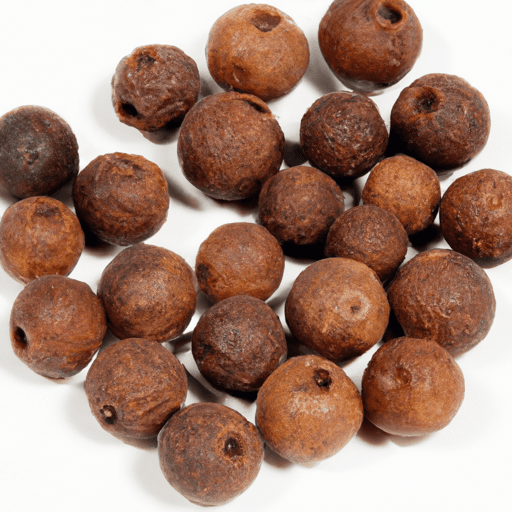Exploring the Versatile Allspice Berry: A Must-Have Ingredient in Your Kitchen
If you’re an adventurous home cook or a gourmet enthusiast, you’ve likely come across allspice berries. This small, spherical spice is a powerhouse of flavor that can lend a delightful twist to your dishes. How about we dive into the world of whole allspice berries and explore their taste, culinary uses, nutritional value, and a few interesting facts? Let’s get started!
Tantalizing Taste and Aroma
Allspice berries possess a unique and distinctive flavor that can spice up a wide range of dishes. True to its name, allspice is known for its ability to mimic the flavors of multiple spices, making it a versatile culinary ingredient. Its taste combines notes of cinnamon, cloves, and nutmeg, resulting in a warm, slightly spicy, and subtly sweet flavor profile. When crushed or ground, allspice releases an intoxicating aroma that is both comforting and invigorating.
Popular Culinary Applications
In the culinary world, allspice berries find their way into a plethora of dishes, spanning multiple cuisines. Here are just a few ways you can incorporate this wonderful spice into your cooking:
Savoury Delights: Allspice berries work wonders in savory dishes. They are commonly used to add depth and complexity to stews, curries, and marinades. Additionally, they can elevate the flavor of pickled vegetables, soups, and even meat dishes. Try using ground allspice in your next batch of meatballs for a burst of aromatic goodness.
Baking Bliss: When it comes to baking, allspice is a true gem. It contributes its warm and comforting essence to a variety of sweet treats, including cakes, cookies, bread, and pastry fillings. Adding a pinch of ground allspice to your apple pie filling will take it to a whole new level!
Beverages with a Twist: Allspice is often used to infuse flavor into beverages such as mulled wine, cider, and even herbal teas. Its fragrant and spicy notes can provide an intriguing twist to your favorite drinks, especially during the colder months.
Nutritional Value
Apart from its flavor-packed potential, allspice berries also offer several health benefits. Although consumed in small quantities, they contain essential nutrients such as:
- Fiber: Allspice berries contain a fair amount of dietary fiber, aiding digestion and promoting a healthy gut.
- Vitamins and Minerals: Allspice is a source of vitamin C, vitamin A, iron, and manganese, which contribute to overall well-being.
- Antioxidants: Packed with natural antioxidants, allspice helps combat harmful free radicals in the body, potentially reducing the risk of chronic diseases.
Fascinating History and Fun Facts
Allspice berries have a remarkable history and a few noteworthy facts that are worth mentioning:
- Origin: Contrary to its name, allspice does not combine various spices. It is the dried berry of the Pimenta dioica tree, which is native to Central and South America.
- Traditional Use: Indigenous people in Central America have used allspice for centuries for medicinal and culinary purposes. They recognized its potent flavor and attributed various healing properties to this versatile spice.
- Name Etymology: The name “allspice” originates from the spice’s aroma, which is reminiscent of a blend of several spices.
In Conclusion
Allspice berries are an indispensable ingredient to have in your kitchen. From adding depth to savory dishes to lending warmth and complexity to sweet delicacies, its unique flavor profile sets it apart from other spices. Don’t be afraid to experiment and let allspice elevate your culinary creations!
So next time you’re browsing your spice rack, be sure to reach for those allspice berries and unlock a world of delicious possibilities. Happy cooking and savoring the flavors of this incredible spice!
Whole Allspice Berries
Origin: Whole allspice berries come from the Pimenta dioica tree, which is native to the West Indies and Central America. They were first discovered by Christopher Columbus on his second voyage to the Americas in 1494.
Common Uses: Allspice berries have a warm, aromatic flavor similar to a combination of cinnamon, cloves, and nutmeg. They are commonly used in various cuisines, including Caribbean, Middle Eastern, and Latin American dishes. They are used in both sweet and savory preparations, such as pickling, marinades, jerk seasoning, mulled beverages, desserts like pumpkin pie, and spiced cakes.
Nutritional Benefits: Allspice berries offer some nutritional benefits. They are a good source of dietary fiber, providing about 5 grams per 1-ounce serving. They also contain small amounts of vitamins and minerals, including vitamin C, vitamin A, calcium, iron, and potassium.
Unique Properties: Allspice gets its name from its flavor, which resembles a combination of different spices, hence the term “allspice.” The berries are typically harvested when green and then dried, and they retain their flavor for an extended period, often up to two years.
Historical Significance: Besides its culinary importance, allspice has some historical significance. It was indigenous to the West Indies, where it was used by indigenous people for medicinal purposes, including treating digestive issues, toothaches, and infections. It played a crucial role in European trade during the colonial era and became globally popular over time. Today, allspice is widely used in kitchens worldwide.




Use the share button below if you liked it.
It makes me smile, when I see it.